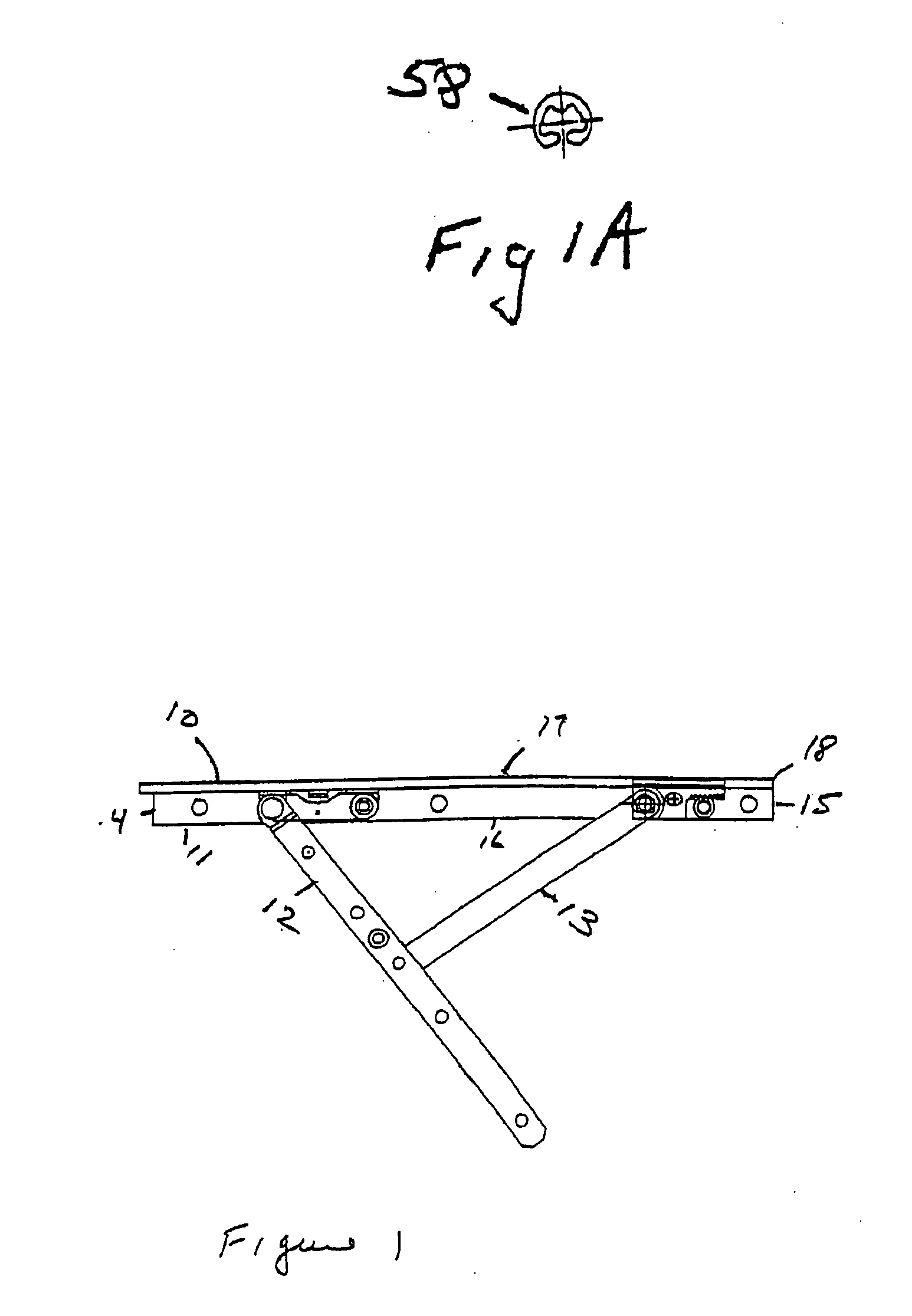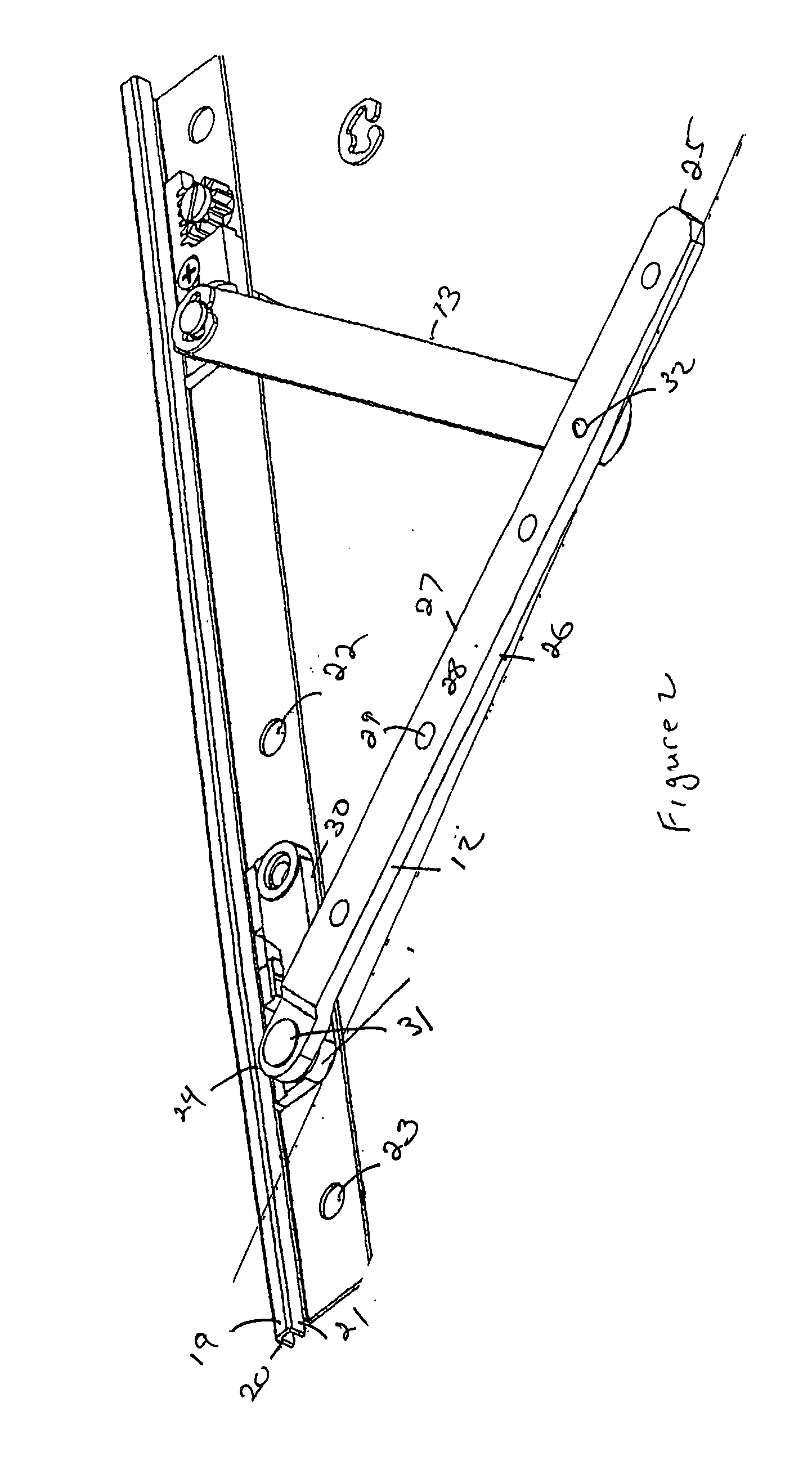Casement window hinge
- Summary
- Abstract
- Description
- Claims
- Application Information
AI Technical Summary
Benefits of technology
Problems solved by technology
Method used
Image
Examples
Embodiment Construction
[0034]A preferred embodiment of the casement hinge 10 of the present invention is shown in FIG. 1. The hinge includes a track 11, a sash arm 12 and a support arm 13. The track 11 is preferably a generally rectangular sheet of metal or plastic having a first end 14 and a second end 15. The ends are joined together by a first side 16 and a second side 17. Second side 17 preferably is provided with a rail 18 for retaining the hinge shoe and permitting it to travel along the rail in the track 11. The rail may be any suitable means to retain the shoe and permit it to ride along the rail. As seen in FIG. 2, the rail has a rail top member 19, and rail side members 20 and 21. The rail side member 21 may be adhered to the track by any suitable means such as welding or it may be integral with the track. The track is provided with one or more orifices 22 and 23 that enable the track to be secured to the frame of the casement window by screws or other fastening devices.
[0035]Extending from the ...
PUM
 Login to View More
Login to View More Abstract
Description
Claims
Application Information
 Login to View More
Login to View More - R&D
- Intellectual Property
- Life Sciences
- Materials
- Tech Scout
- Unparalleled Data Quality
- Higher Quality Content
- 60% Fewer Hallucinations
Browse by: Latest US Patents, China's latest patents, Technical Efficacy Thesaurus, Application Domain, Technology Topic, Popular Technical Reports.
© 2025 PatSnap. All rights reserved.Legal|Privacy policy|Modern Slavery Act Transparency Statement|Sitemap|About US| Contact US: help@patsnap.com



